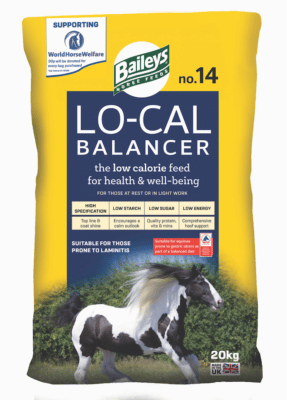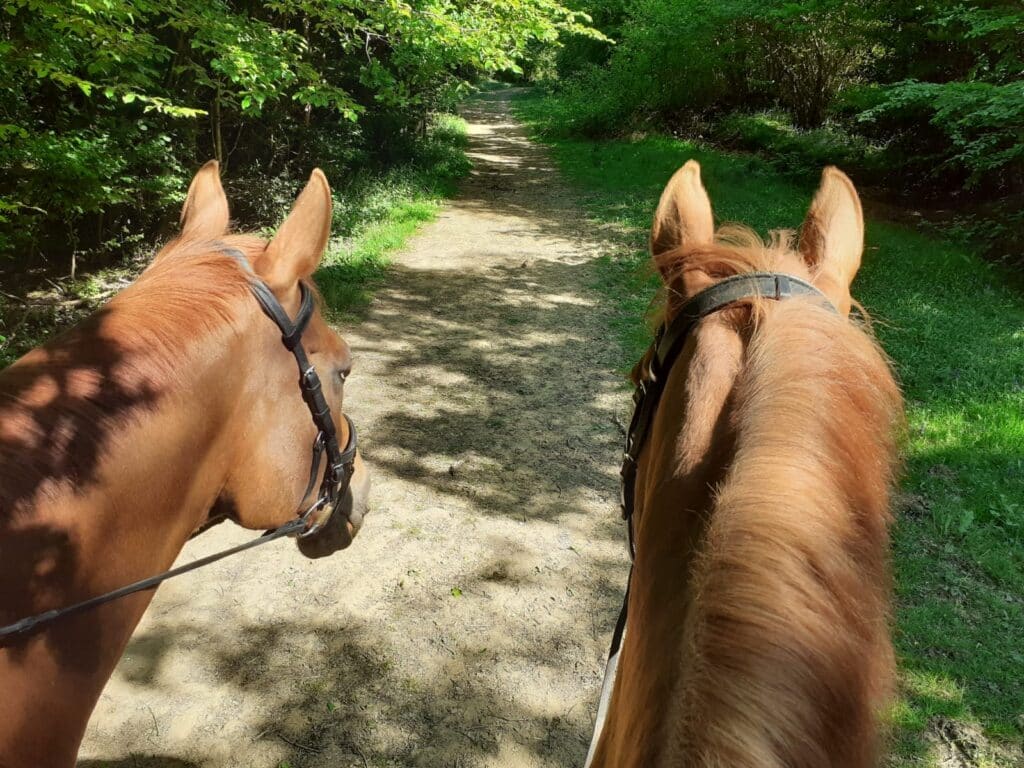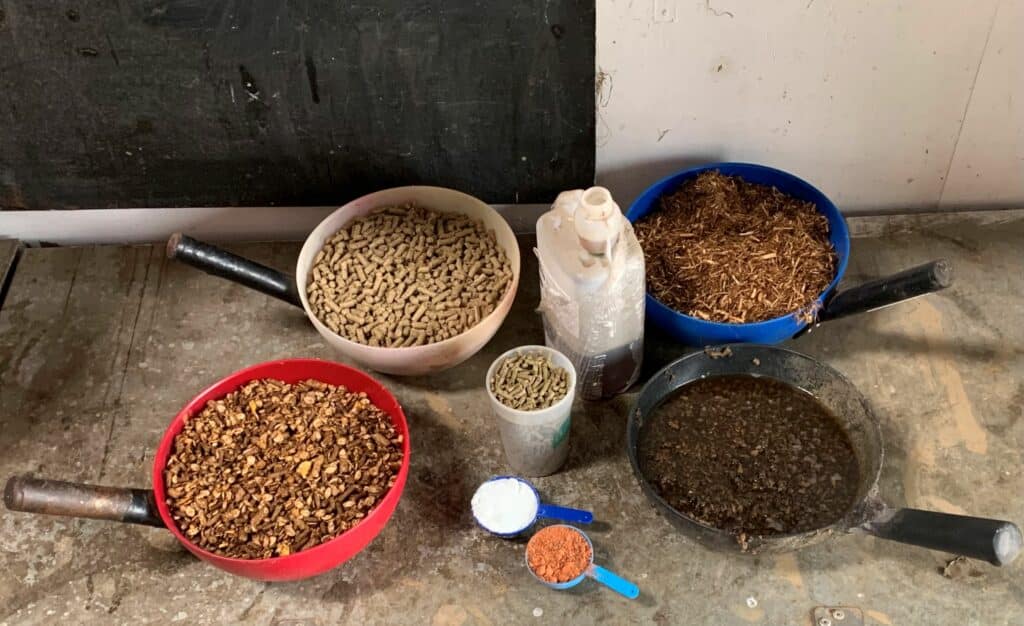Appetite & Feeding, Nutrition
What’s in your horse’s feed?
Independent equine nutritionist Jennifer Little, advises how to navigate the feed bag labels
The equine feed market is potentially more complicated than that of the dog or cat feed markets. Legislation even states ‘For pets other than cats and dogs, complete feed or complementary feed maybe replaced by compound feed’¹. So, horse feeds can consist of complete, compound, balancers/concentrates, straights, supplementary, and supplements. Then further complicated by feed terms such as hard, mix, mueslis, nuts, cubes, chaffs, fortified, pellets, and mashes. The horse feed market is set to increase by 4.3% between 2021 and 2028² and the supplement global sector predicted to reach a value of US $96+ million by 2026³. So, it’s not likely to get simpler any time soon.
Navigating the terminology
Complete feed is different to a traditional feed, containing both the concentrate and forage proportions of the diet in a single bag⁴.
Compound feeds (sometimes referred to as a hard feed) provide the concentrate proportion of the horses ration, without the forage component. These are designed to be fed in addition to the forage ration. The forage still needs to be to provided at 2% body weight per day (Dry Matter Basis) e.g. 10kg forage (DM)/ day for a 500kg horse. These feeds supply additional energy from fibre, protein, carbohydrates and oils for workload or condition.
To further compound the risk of confusion, some bags of ‘hard feeds’ are not fortified. These don’t contain the required vitamins, minerals and essential amino acids (EAA’s) to balance a ration with forage alone. These could be considered as supplementary feeds. To provide a balanced diet a balancer or suitable supplement should be supplied. These unfortified feeds do provide a method of increasing energy levels in a ration, without significantly impacting on vitamin and mineral levels so, can prove a useful ‘top-up’.

A balancer (sometimes referred to as a concentrate) provides the nutrients that a fortified concentrate would, but at a lower feeding rate. Thus allowing a ration to be balanced with the forage, without the additional calories of a typical compound feed. ‘Straight’ refers to a single type of grain e.g. oats – they may have undergone a process to increase digestibility, such as being rolled. They are not mixed with other grains or ingredients and tend to be high in carbohydrates. Their nutrient contribution can vary from one crop to the next with greater variances than from one batch to the next of a compound feed. Consistency of a ration can be more difficult to achieve with higher quantities of straights.
Supplements
Supplements are often the means of providing very specific nutrients on top of a horse’s current ration. The feeding rates are frequently very small, in comparison to other feed stuffs. These can be found in pellets, powders, and liquids forms. Their usage has become common place with a recent study finding 98% of professionals and 86% non-professionals using daily supplements in their horses diets⁵. Due to the small feeding rates and concentration of specific nutrients it is possible to provide these above optimal and so, potentially detrimental levels. Legislation aims to minimise this risk by controlling the labelling on such products. The instructions for proper use of complementary feed and feed materials containing additives in excess of the maximum levels fixed for complete feed shall state maximum quantity⁶.
Mixes/mueslis, nuts/cubes, pellets, mashes and chaffs
Most of the above types of feeds can be found in a range of forms. Mixes (sometimes referred to as mueslis) are in appearance, similar to that of a granola cereal we may have for breakfast. Cubes (sometimes referred to as nuts) are formed into bite sized pieces, made by grinding down the composition of the ration before being ‘baked’ into their consistent form. Pellets are significantly smaller than cubes but similar in appearance. Mashes are feeds that are required to be soaked prior to being fed and in their dry form, are typically found in cubes or shreds. Chaffs are bagged chopped forms of forage e.g. alfalfa.
- The feeding rates as stated on the packaging can be a good indicator of what category the bag of feed falls into.
- Complete feeds supply both concentrate and forage, they will have a very high feeding rate, such as 1.5-2% of body weight. A 545kg horse might be fed 8-11 kg per day of complete feed ⁴.
- Compound feeds without the forage component will have a lower feeding rate, usually 400g-1kg per100kg bodyweight per day.
- Balancers or concentrates tend to have still lower feeding rates, typically 100-200g per 100kg bodyweight per day.
- Supplements traditionally have the lowest feeding rates, with 30g/ml per day up to 100g/100kg body weight per day are frequently seen.
Labelling and legislation
Unfortunately not all manufactures follow these definitions, so there can be further confusion. Legislation relating to package labelling aims to address this; The labelling and the presentation of feed shall not mislead the user⁷. In addition ‘the labelling or the presentation of feed materials and compound feed shall not claim that it will prevent, treat or cure a disease’⁸. This legislation aims to ensure that the examination of any feed bag should allow an owner to establish if it is suitable for their horse, which does puts a degree of responsibility on to the owner.
Owner responsibility
It is the owner’s responsibility to assess if the feeding instructions printed on that specific product are achievable. Key responsibilities are:
- Identify if it is the suitable type of feed.
- Know the minimum feeding rate e.g. 400g/100kg Bodyweight = 2kg feed/day for a 500kg horse. \Assess if this feeding rate is appropriate (it may not be due to excessive energetic behaviour or body condition).
- Ensuring the relevance of the feed (fortified compound feeds are formulated for a level of work, growth phase or breeding status of that horse e.g. light, medium, hard work or pregnant).
- Ensure it will provide enough calories/energy for the work load or body condition.
- Establish the suitability if the horse has sensitivities due to a clinical history
- Ensuring that if the feeding rate of the total bucket feed exceeds 2kg, it is split into the number of meals required.
- Ensuring each bucket feed remains below this weight.
- Know the maximum feeding rates and ensure this isn’t exceeded.
Achieving the desired results
- Feeding rates are based on the horse’s actual weight so, it is important that this first step is achieved. Weigh-tapes or more accurately a calibrated weigh-bridge can be used to ensure that the horse’s known weight is correct.
- It maybe required to add a product from one of the other types of feeds to provide a complete and balanced ration. A horse just on forage will need a provision of vitamins, minerals and EAA’s. A balancer maybe suitable if additional calories are not required, or a compound feed if they are.
- If its impossible to reach the minimum feeding rate of a current compound feed it maybe required to switch this portion of a ration for a full portion of a balancer or concentrate.
- If a horse is working at a higher level of intensity than their feeds formulated for, it is unlikely to achieve their required nutrient levels. Switching to a feed formulated for actual work levels or adding in a suitable supplement, would be appropriate.
- Ensure the form of the diet is suitable e.g. dental issues may require a mash.
- If the required feeding rate of that feed requires the ration to be split into too many meals for management to allow, switching to a lower feeding rate maybe suitable.
- If the maximum feeding rates are being exceeded to achieve the desired results a feed richer in digestible energy will be required.
If an owner is unsure they can contact the manufacturer (most have dedicated help lines), or consult an Independent Equine Nutritionist.

Fully balanced diet without the calories
Good-doers and the laminitis-prone may need to watch their waistlines but they still need a fully balanced diet for healthy hooves and general well-being. Baileys Lo-Cal balancer is the ideal way to provide essential nutrients, without the calories associated with a mix or cube, and is simple to feed, by the mug-full alongside forage, to ensure the horse of pony is getting what they need and, critically, without additional calories.
Lo-Cal balancer contains quality protein to provide the building blocks for muscle, skin and hoof and help maintain top line (not fat) and tissue integrity, while it also contains a full spectrum of vitamins and minerals (including biotin), plus antioxidants. With Digest Plus prebiotic and a probiotic yeast, to support gut health, it is the ideal cost-effective solution to help keep the good-doer on a healthy, balanced, calorie-controlled diet.
SRP around £32 for 20kg
References
- Regulation EC No 767/2009 legislation.gov.uk Labelling, presentation and packaging article 15, 1 (a)].
- Data Bridge Market Research 2021 Horse Feed Market – Global Industry Trends and Forecast to 2028
- Verified Market Research 2018 Equine Supplement Products by Market by supplement, by application, by distribution channel, by geographic scope and forecast 11324, 115
- Kathleen Crandell 2016 Equinews Nutrition and Health. Complete feed for horses Nov 8th
- Murry, J.M.D., Hanna, E., & Hastie, P. 2018 Equine Dietary Supplements: an insight into their use and precortions in the Irish equine industry. Irish Veterinary Journal 71:4
- [Regulation EC No 767/2009 Labelling, Presentation and Packaging legislation.gov.uk Annex II, 4].
- Regulation EC No 767/2009 Labelling, Presentation and Packaging Article 11, 1 Legislation.gov.uk
- Regulation EC No 767/2009 Labelling, Presentation and Packaging Article 13, 3 (a) Legislation.gov.uk

